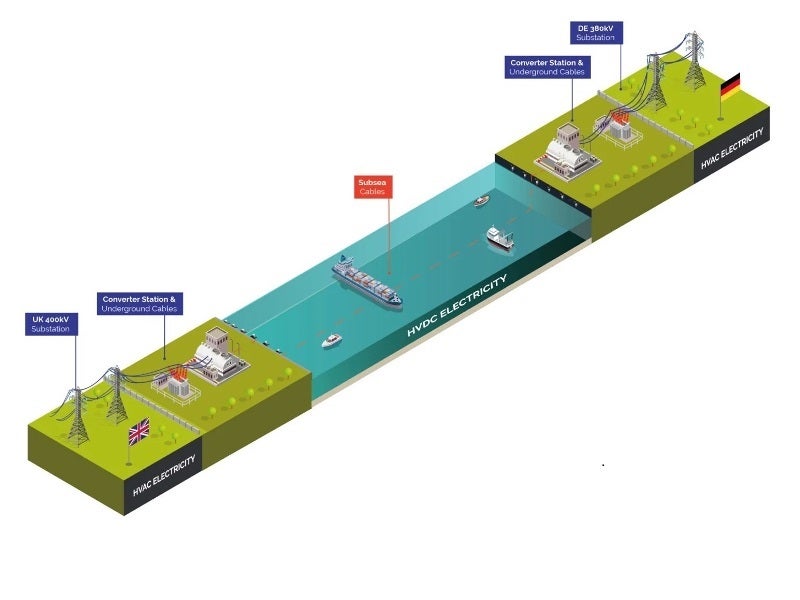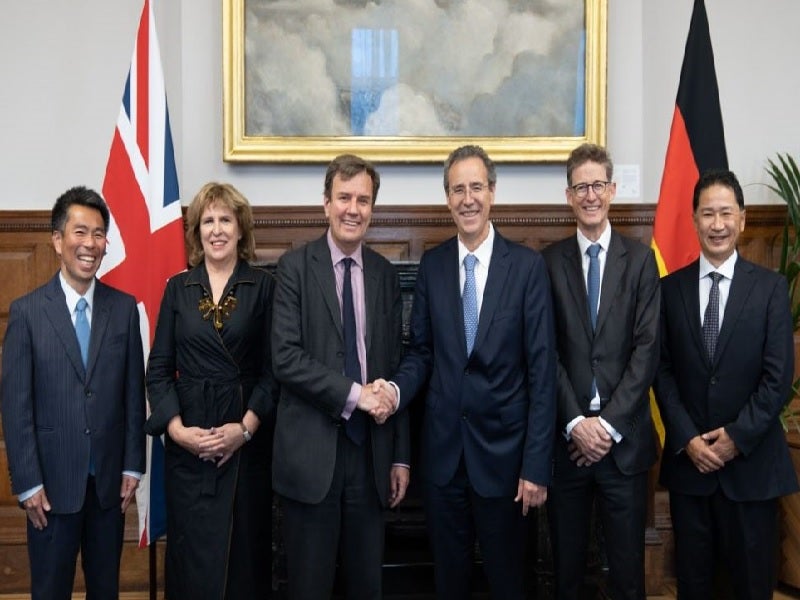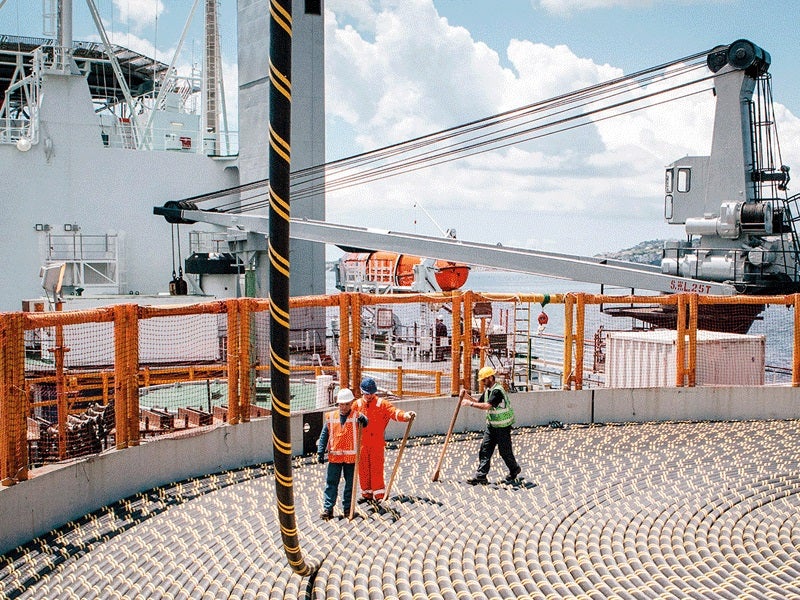The NeuConnect is a proposed electricity interconnector project that will create a High Voltage Direct Current (HVDC) power link between the UK and Germany. It is being developed by NeuConnect Britain Limited.
The 725km-long power link will enable transmission of up to 1.4GW of electricity in either direction and will help in creating a more secure and resilient energy supply.
A privately financed project, NeuConnect is led by a consortium of international investors that include Meridiam (France), Allianz Capital Partners on behalf of Allianz insurance companies (Germany), and Kansai Electric Power (Japan).
The £2.4bn interconnector reached financial close with a consortium of more than 20 banks and financial institutions, including EIB, the UK Infrastructure Bank and the Japan Bank for International Cooperation (JBIC) in July 2022.
Early works for the project are expected to commence in late 2022, with operations slated to begin in 2028.
Once complete, the 525kV DC voltage, the power interlink is estimated to result in a net reduction in carbon emissions of more than 13Mt of carbon dioxide over 25 years and fulfil the energy needs of up to 1.5 million households.
Route and design details
NeuConnect interconnector project will involve building a subsea and underground HVDC electricity link between the Isle of Grain in Kent, England and the Wilhelmshaven region, Lower Saxonia, Germany.
It will feature two high voltage subsea cables and two high voltage underground cables, along with a fibre-optic cable for telemetry purposes. The plan involves burying the subsea cables in trenches under the sea floor or laying them on the sea floor with alternative protection systems.
The interconnector will traverse through British, Dutch, and German waters, and will connect to the converter stations and electricity grids at Grain in the UK and Wilhelmshaven in Germany.
Underground Joint Transition Chambers (JTCs) will be built to bring the subsea cables ashore and then connect the DC cables to the converter stations on the two sides.
Each converter station site will feature buildings and other outdoor electrical equipment. The sites will convert electricity from alternating current (AC) to direct current (DC) and vice versa.
Power evacuation
As the UK and German electricity grids use Alternating Current (AC), the converter station will convert the electricity to AC. Subsequently, the electricity will be supplied to the adjacent substations through AC cables and from there to the respective national grids.
NeuConnect has signed a connection agreement with electricity transmission system operator TenneT to connect the interconnector in the German energy grid. It has also signed a similar connection agreement with National Grid Electricity Transmission (NGET) to connect the other side of the connector with the UK energy grid.
Contractors Involved
Prysmian Group secured a contract worth around €1.2bn to deliver the complete cable system that will be operated at ±525kV HVDC utilising mass-impregnated (MI) paper insulated cables, fibre optic cables on the land and selected submarine sections and cable monitoring systems during the warranty period.
Prysmian’s centre of excellence at the Arco Felice factory near Naples, Italy, will manufacture the submarine and land power cables, while the offshore subsea cable installation activity will be performed by the company’s cable laying vessels Leonardo da Vinci, Cable Enterprise, and Ulisse.
Sumitomo Electric Industries won a subcontract from Prysmian to supply 150km of HVDC submarine cable for the interconnector.
Under a ‘high three-digit million euro range’ agreement with the NeuConnect consortium, Siemens Energy will build two turnkey HVDC converter stations for the interconnector. Besides power transmission, the HVDC PLUS system from Siemens Energy will regulate and stabilise weak AC grids. In case of errors, the HVDC PLUS system can restart specific network segments. A joint venture (JV) of built environment consultancy Arup and German engineering firm Fichtner will provide NeuConnect-related project services. The services will include project and commercial management; Safety, Health, Environment, and Quality (SHEQ) management; and consenting oversight across both the onshore and offshore elements of the project.





